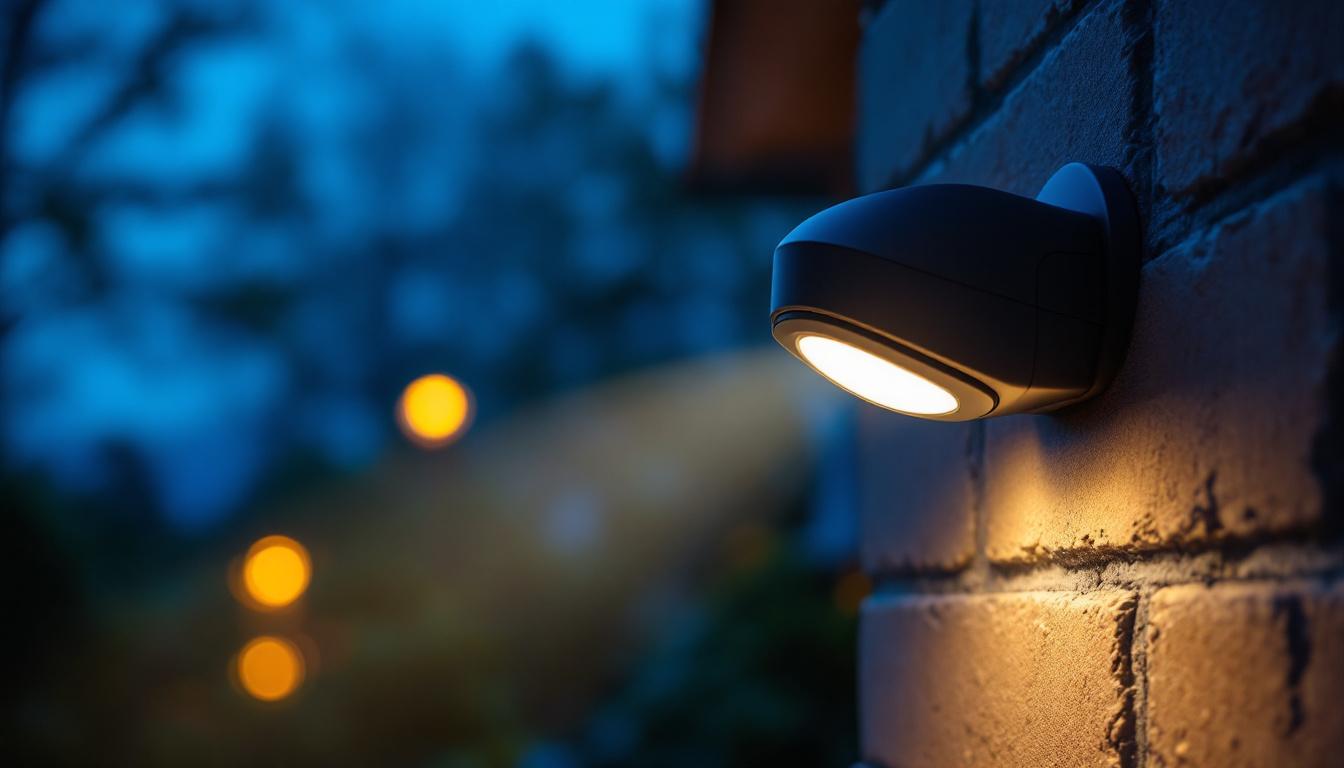
The integration of automatic sensors in lighting systems has transformed the way lighting contractors operate. These advanced technologies not only enhance the efficiency of lighting solutions but also significantly impact the financial performance of contractors. Understanding how automatic sensors can affect the bottom line is crucial for lighting contractors aiming to stay competitive in a rapidly evolving market.
Automatic sensors are devices designed to detect various environmental factors such as motion, light levels, and occupancy. By responding to these factors, they can control lighting systems in real time, ensuring that lights are only on when needed. This capability is particularly valuable in commercial and industrial settings, where energy consumption can be substantial. In residential applications, these sensors can also enhance convenience and security, allowing homeowners to automate their lighting in a way that suits their lifestyle.
There are several types of automatic sensors available, each serving a unique purpose. Motion sensors, for instance, detect movement within a designated area and can turn lights on or off accordingly. Light sensors, on the other hand, measure ambient light levels and adjust artificial lighting to maintain optimal illumination. Occupancy sensors combine both functionalities, providing a comprehensive solution for energy management. Additionally, some advanced sensors can even differentiate between human and animal movement, reducing unnecessary activations and optimizing energy use further.
These sensors can be integrated into various lighting systems, including LED fixtures, which are known for their energy efficiency. The combination of automatic sensors and LED technology creates a powerful synergy that enhances overall lighting performance while reducing energy costs. Furthermore, smart home systems are increasingly incorporating these sensors, allowing users to control their lighting remotely through smartphones or voice-activated devices, thus adding another layer of convenience and customization to modern living spaces.
One of the most significant advantages of automatic sensors is their ability to improve energy efficiency. By ensuring that lights are only active when necessary, these devices can lead to substantial reductions in energy consumption. For lighting contractors, this translates into lower utility bills for clients, making their services more attractive. In fact, studies have shown that buildings equipped with automatic sensors can reduce lighting energy use by up to 30% or more, depending on the application and sensor type.
Moreover, many regions offer incentives for energy-efficient installations, which can further enhance the financial appeal of projects incorporating automatic sensors. By promoting these benefits to potential clients, lighting contractors can differentiate themselves in a competitive market. Additionally, the long-term savings on maintenance and replacement costs associated with LED lights and sensors can be a compelling selling point, as these systems often have longer lifespans and require less frequent servicing compared to traditional lighting solutions. This not only boosts the appeal of energy-efficient upgrades but also contributes to a more sustainable future by reducing the overall carbon footprint of buildings.
Client satisfaction is paramount for lighting contractors, and the implementation of automatic sensors can significantly enhance the user experience. Clients are increasingly looking for solutions that not only save money but also improve convenience and comfort in their spaces. The integration of smart technology into lighting systems not only meets these demands but also positions contractors as forward-thinking professionals in a competitive market.
Automatic sensors provide a level of convenience that manual controls simply cannot match. For instance, in commercial spaces, employees can move freely without worrying about turning lights on or off. This seamless experience can lead to higher satisfaction rates among clients and their employees. Additionally, the use of motion sensors in restrooms or hallways can enhance safety by ensuring that lights are always on when needed, thus preventing accidents in dimly lit areas.
Furthermore, the ability to customize lighting settings through automatic sensors allows clients to create environments that suit their specific needs. Whether it’s adjusting brightness levels based on the time of day or ensuring lights are off in unoccupied areas, these features enhance the overall user experience. Moreover, many modern sensors come equipped with smart technology that can be controlled via mobile apps, enabling clients to manage their lighting remotely. This level of control not only boosts convenience but also allows for energy-efficient practices, as clients can monitor and adjust their lighting usage in real-time.
When clients are satisfied with the functionality and efficiency of their lighting systems, they are more likely to return for future projects. Building long-term relationships is crucial for lighting contractors, and automatic sensors can play a significant role in fostering client loyalty. By providing innovative solutions that address client needs, contractors can establish themselves as trusted partners in their clients’ ongoing projects. Additionally, offering maintenance services for these advanced systems can further solidify these relationships, as clients will appreciate the ongoing support and expertise provided.
Moreover, as sustainability becomes a key focus for many businesses, contractors who promote energy-efficient lighting solutions, such as those enabled by automatic sensors, can differentiate themselves in the market. Clients are increasingly interested in reducing their carbon footprint and operational costs, and contractors who can demonstrate the long-term savings and environmental benefits of these technologies will likely see increased demand for their services. By aligning their offerings with the values of their clients, lighting contractors can not only enhance satisfaction but also pave the way for future collaborations and referrals.
Maintenance costs can eat into a contractor’s bottom line, but the use of automatic sensors can help mitigate these expenses. By ensuring that lighting systems operate only when necessary, the wear and tear on fixtures can be significantly reduced.
Automatic sensors contribute to the longevity of lighting fixtures by preventing them from being used unnecessarily. For example, lights that are automatically turned off when a room is unoccupied experience less operational time, which can lead to a longer lifespan. This not only benefits the contractor by reducing replacement costs but also enhances the client’s satisfaction with the overall system.
In addition to extending the life of fixtures, automatic sensors can facilitate proactive maintenance strategies. Many modern sensors come equipped with diagnostic features that can alert contractors to potential issues before they become significant problems. This capability allows contractors to address maintenance needs promptly, minimizing downtime and ensuring client satisfaction.
The rise of smart technology has opened new avenues for lighting contractors. Automatic sensors can be integrated into smart building systems, allowing for centralized control and monitoring of lighting across multiple locations. This integration not only enhances functionality but also provides valuable data that can inform future projects.
Smart technology enables the collection of data regarding lighting usage patterns. This information can be invaluable for lighting contractors, providing insights that can inform design decisions and future installations. By analyzing data on occupancy and energy consumption, contractors can tailor their services to meet the specific needs of their clients.
Additionally, this data can be used to identify trends and areas for improvement, allowing contractors to stay ahead of the competition by offering cutting-edge solutions that are informed by real-world usage.
As technology continues to evolve, the integration of automatic sensors and smart technology positions lighting contractors to adapt to future demands. Clients are increasingly looking for solutions that are not only efficient but also flexible and scalable. By incorporating these technologies, contractors can future-proof their offerings and ensure they remain relevant in a changing market.
While the benefits of automatic sensors are clear, there are challenges and considerations that lighting contractors must navigate. Understanding these aspects can help contractors make informed decisions about their projects.
The upfront costs associated with installing automatic sensors can be a barrier for some clients. Although the long-term savings on energy bills and maintenance costs can offset these initial expenses, contractors must be prepared to communicate these benefits effectively. Providing detailed cost-benefit analyses can help clients see the value in investing in automatic sensor technology.
Implementing automatic sensors requires a certain level of technical expertise. Lighting contractors may need to invest in training for their teams to ensure they are equipped to install and maintain these systems properly. This investment in human capital is essential for delivering high-quality services and ensuring client satisfaction.
To capitalize on the advantages of automatic sensors, lighting contractors must effectively market these solutions to potential clients. A well-crafted marketing strategy can highlight the benefits and differentiate contractors in a competitive landscape.
Education is key when it comes to marketing automatic sensor solutions. Contractors should consider hosting workshops, webinars, or informational sessions to educate clients about the benefits of these technologies. By providing valuable insights, contractors can position themselves as industry experts and build trust with potential clients.
Another effective marketing strategy is to showcase successful projects that have incorporated automatic sensors. Case studies and testimonials can provide tangible evidence of the benefits these systems offer. By highlighting real-world examples, contractors can demonstrate the value of their services and attract new clients.
The integration of automatic sensors in lighting systems presents a wealth of opportunities for lighting contractors. From enhancing energy efficiency and reducing maintenance costs to improving client satisfaction and fostering long-term relationships, the impact on the bottom line is significant.
As the demand for smart lighting solutions continues to grow, contractors who embrace these technologies will be well-positioned to thrive in a competitive market. By understanding the benefits and challenges associated with automatic sensors, lighting contractors can make informed decisions that not only enhance their services but also contribute to their overall success.
In a rapidly changing industry, staying ahead of the curve is essential. Embracing automatic sensor technology is not just a trend; it is a strategic move that can lead to sustainable growth and profitability for lighting contractors.
Ready to elevate your lighting projects and boost your bottom line? LumenWholesale is here to support your journey towards integrating automatic sensors and smart lighting solutions. With our commitment to providing spec-grade lighting products at unbeatable wholesale prices, you can ensure your clients receive the best value without compromising on quality. Take advantage of our hassle-free bulk buying options, complete with free shipping, and discover how our superior lighting products can transform your business. Don’t miss out on the perfect blend of quality, affordability, and convenience. Wholesale Lighting at the Best Value awaits you at LumenWholesale.

Discover expert insights into the best practices for installing motion sensor outdoor LED lights.

Discover the frequent pitfalls lighting contractors encounter when installing Brightronic solar sign lights.

Discover the benefits of sunken LED lights and learn how to future-proof your lighting projects with innovative design tips and energy-efficient solutions.

Discover the essential insights lighting contractors need to master architectural lighting.